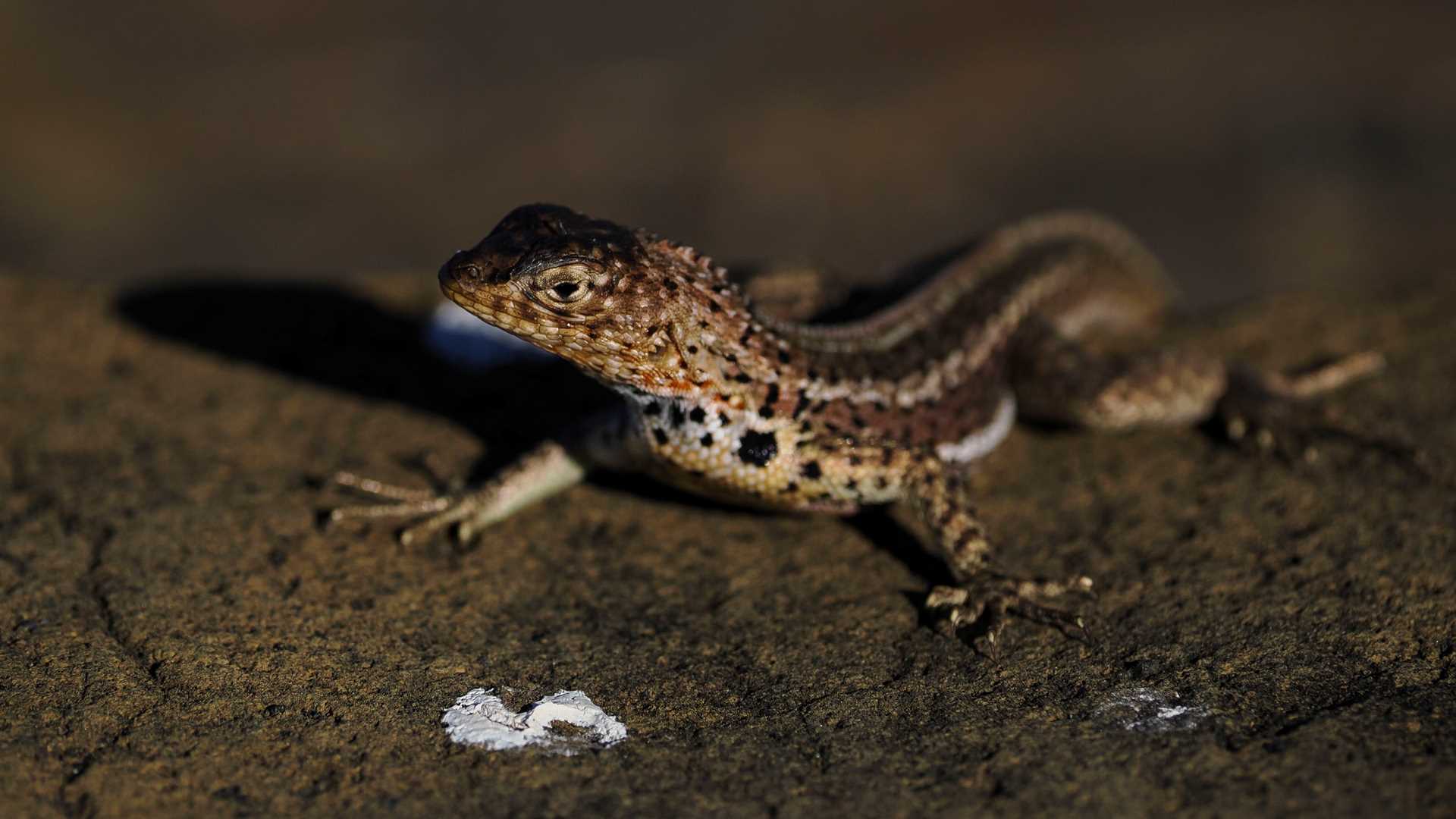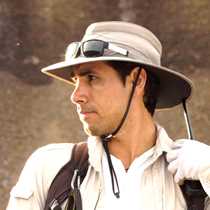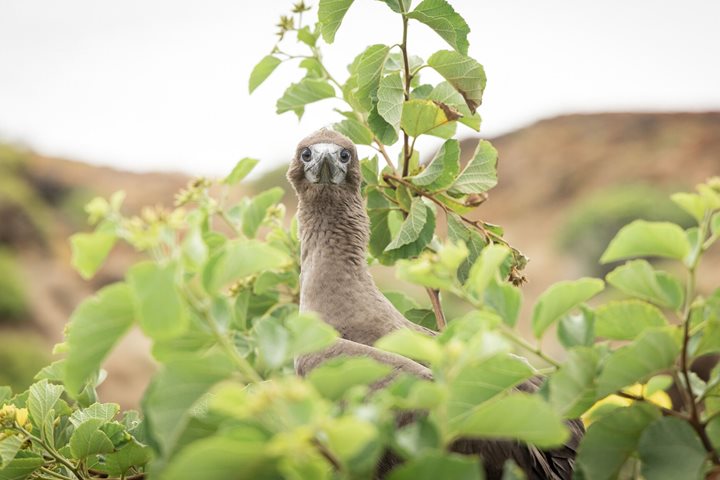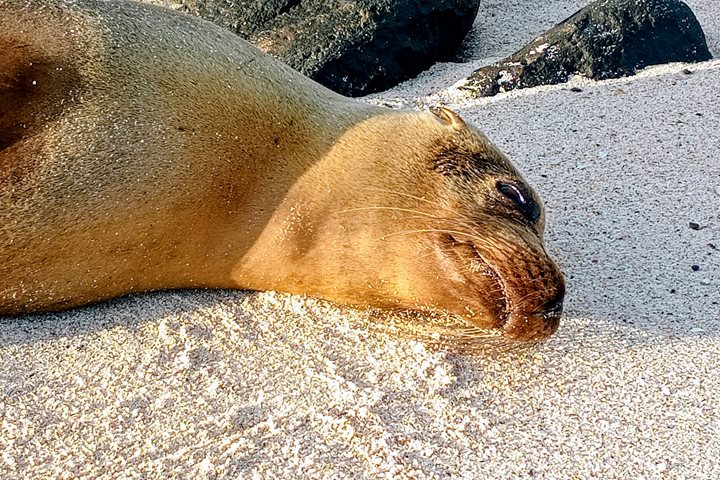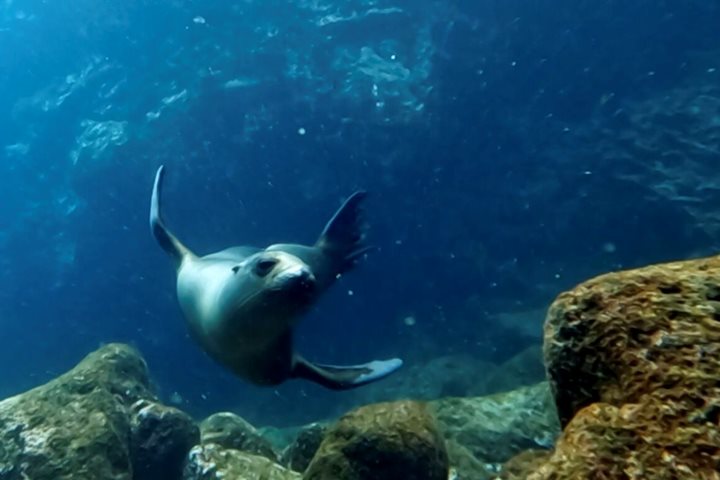Today, National Geographic Islander II came back to the center of the archipelago to visit Darwin’s favorite island: Santiago. Before breakfast, we departed with kayaks to explore the volcanic shores and look for wildlife. Some of our guests went to the beach to take a pleasant walk through a very lush mangrove forest that protects the nesting sites of Pacific green turtles.
After breakfast, we continued to explore with kayaks, snorkeling, and Zodiac excursions. Our guests were fascinated by the dramatic landscape and the unique wildlife that inhabits it.
In the afternoon, we visited Puerto Egas, located in South James Bay. We went hiking along the rocky shores, and some guests decided to stay and explore the beach, swim with sea lions, and practice yoga with our wellness specialist.
It was quite a unique day with beautiful sunny skies, abundant wildlife, and amazing scenery.

